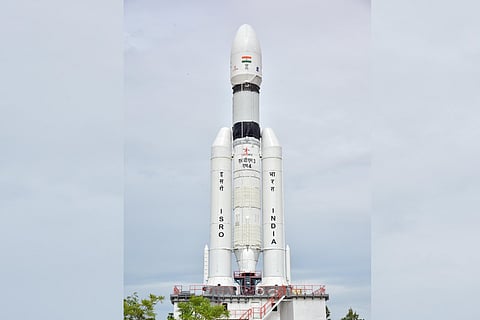

On Wednesday, July 5, India took a major step towards its third moon mission by integrating the Chandrayaan-3 spacecraft with its launch vehicle LVM3 rocket. This is the first major development in the project since March 2023, when Chandrayaan-3 passed the vibration and acoustic tests carried out by the Indian Space Research Organisation (ISRO) in the test facilities located at the UR Rao Satellite Centre in Bengaluru. The ISRO also said on Wednesday that the movement of the rocket with Chandrayaan-3 to the launch pad had commenced.
India’s mission to the moon via the Rs 615 crore worth Chandrayaan-3 is tentatively slated for July 13, while the launch window is open between July 12 and July 19. The mission director of the project is Ritu Karidhal, who retained the role after Chandrayaan-2. Here is all you need to know about the spacecraft and the much-awaited lunar mission:
LVM3-M4/Chandrayaan-3️ Mission:
— ISRO (@isro) July 5, 2023
Today, at Satish Dhawan Space Centre, Sriharikota, the encapsulated assembly containing Chandrayaan-3 is mated with LVM3. pic.twitter.com/4sUxxps5Ah
> LVM3, the rocket that is to carry the spacecraft with a lander and a rover, is India’s heaviest rocket. It will put the spacecraft or orbiter — weighing nearly 3,900 kg — in a designated orbit, and from there, the spacecraft will start its long journey of about 3.84 lakh km towards the moon. The spacecraft carries a lander and a rover, the names of which are not yet disclosed.
> The main purpose of Chandrayaan-3 is to safely land the lander on the moon soil. Following that, the rover will roll out to do the experiments. It may be recalled that when Chandrayaan-2 was launched on July 22, 2019, reaching the moon after 48 days, Vikram (the lander) could not make a successful soft landing and lost communication with the orbiter. Keeping this in mind, ISRO officials have reportedly said certain changes have been made in this lander. An official told IANS that the lander will have four motors instead of five, and that some changes in software has also been done.
> The major addition to Chandrayaan-3 is the Spectro-polarimetry of Habitable Planet Earth (SHAPE) payload. It will study the spectral and polari metric measurements of Earth from the lunar orbit. The other payloads on the lander are: Chandra’s Surface Thermophysical Experiment (ChaSTE) to measure the thermal conductivity and temperature; Instrument for Lunar Seismic Activity (ILSA) to measure the seismicity around the landing site; and Langmuir Probe (LP) to estimate the plasma density and its variations. A passive Laser Retroreflector Array from NASA is accommodated for lunar laser ranging studies. The rover will carry an Alpha Particle X-ray Spectrometer (APXS) and Laser Induced Breakdown Spectroscope (LIBS) to derive the elemental composition in the vicinity of the landing site.
Lander
> After the lander lands safely, the rover will carry out a range of experiments including its thermophysical properties, lunar surface plasma environment, and elemental composition.
(With IANS inputs)